Hazamacho house by Tatsuya Kawamoto + Associates (GOLD WINNING PROJECT)
The content and writing information provided by the shortlisted contributors to this project are the exclusive property of their respective authors. All rights reserved for shortlisted contributors.
In the urbanization control area,rather than prohibiting the construction of buildings, we believe that building for local farmers can curb disorderly urbanization.
This is a one-story house for farmers in rural areas.
The aim was not to be a residence, aimed to become a frame for farmers in this area by building it on this site surrounded by agricultural land.
[Should be building rate of more than 40%]
The site is an area rich in nature with mountains and a river flowing in front of it, and there are almost no buildings built around it, and each site is a large rural area.
According to city regulations, in addition to the building rate (less than 60%), it was required to secure a building rate of "more than 40%". However, the client does not want such a very large building. In order to secure more than 40% of the construction area within a limited budget, we thought of a way to suppress urbanization by creating large buildings while keeping costs down.
[Frame for agricultural work and living space]
In order to achieve these within budget, we built a large roof that jumps in all directions.
Structurally necessary walls are compactly organized in the center of the building, and the outer periphery is as free as possible. And it was easy to access from the surrounding fields. The load-bearing walls arranged in folds in the center function as a division of crops and tool storage, and the living space behaves in a variety of ways, such as a space for reading a book and a storage room.
Eventually, all of these houses will become agricultural sheds.
[Connecting mountain ridges with diagonal rods]
Aiming for a ridgeline shape that connects the surrounding mountains, the eaves are high on the east side where the mountains rich in nature are located, and the eaves are lowered on the south side to suppress solar radiation in summer, forming a gentle hyperbolic parabola using only straight wood beam. The eaves are cantilevered because they bounce out in four directions, but by supporting the tip with an iron diagonal rod, it was possible to create a gentle ridge line shape with reduced eaves thickness.
[Curbing disorderly urbanization]
By internalizing the necessary parts of this 300㎡ structure, we thought of creating a large frame for agricultural work and a living space necessary for living together.
The space on the site is used as agricultural land for growing crops, and the depth of the eaves creates continuity with the living space, and the space under the eaves also functions as a drying place for harvested crops that can be accessed from other fields of surrounding farmers. In the future, only the structure will remain, and it will be a workspace for the surrounding farmers. We hope that over time it will take root in the region, and that this structure will suppress urbanization and protect valuable farmland.
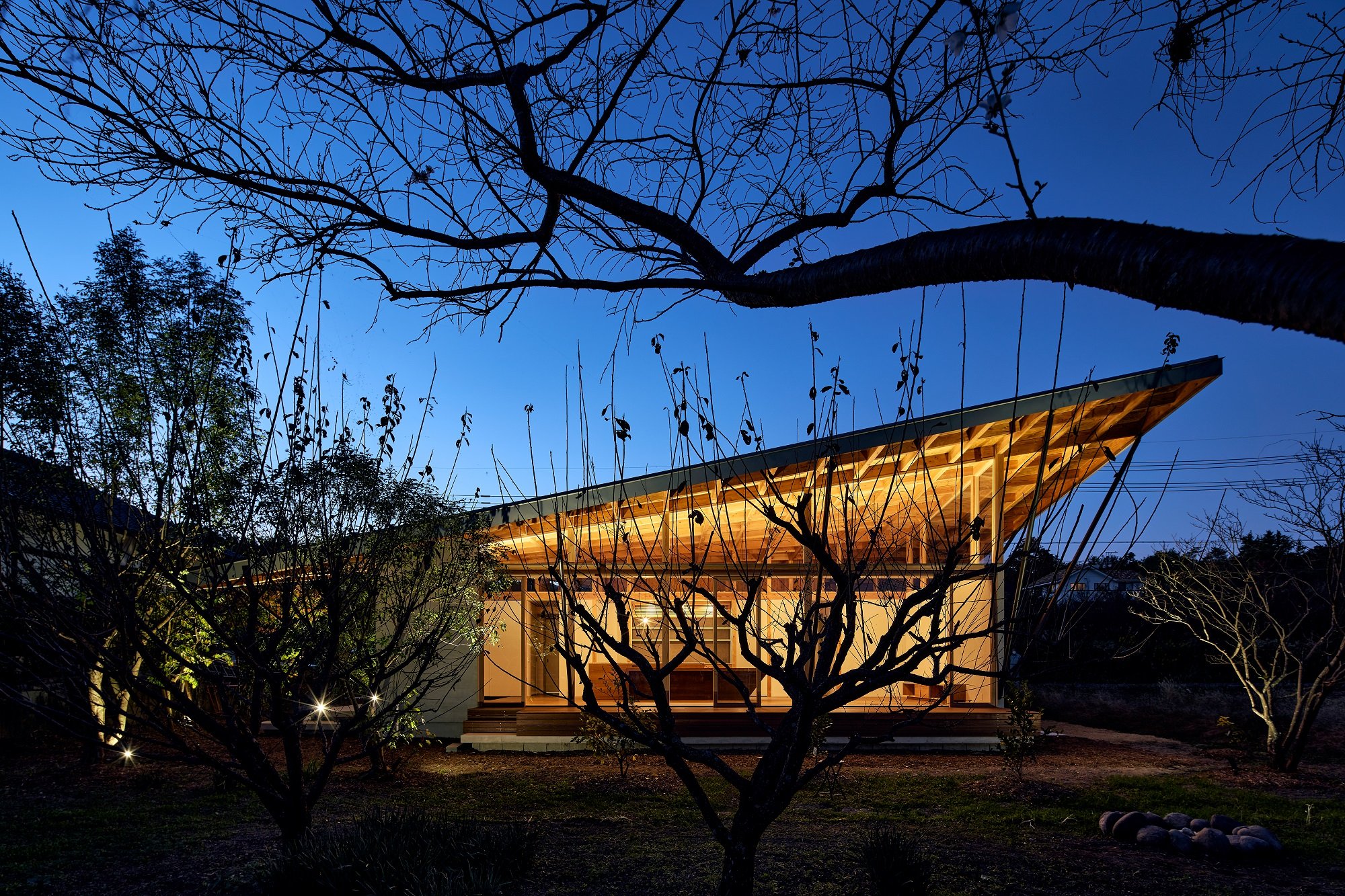


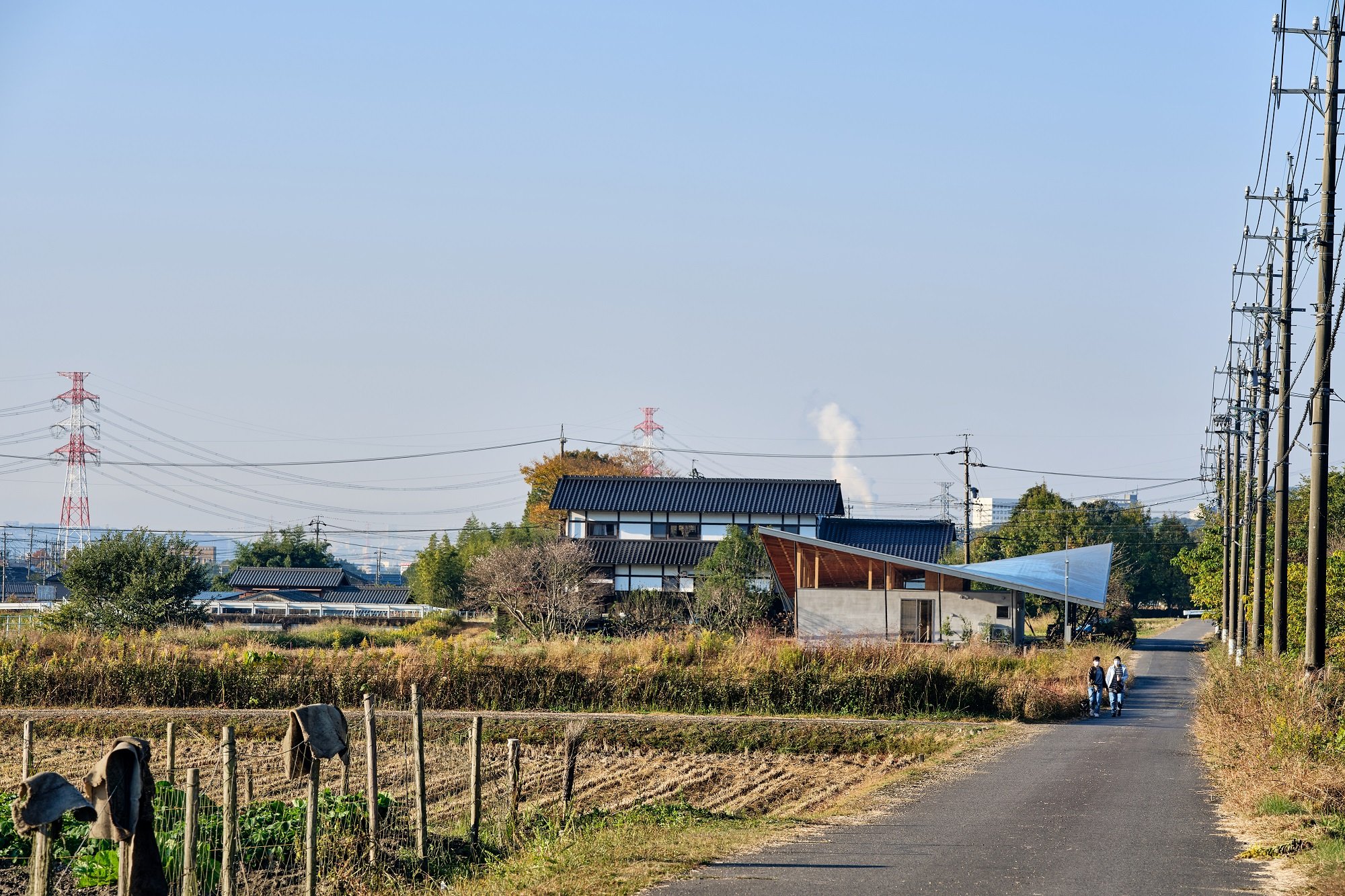
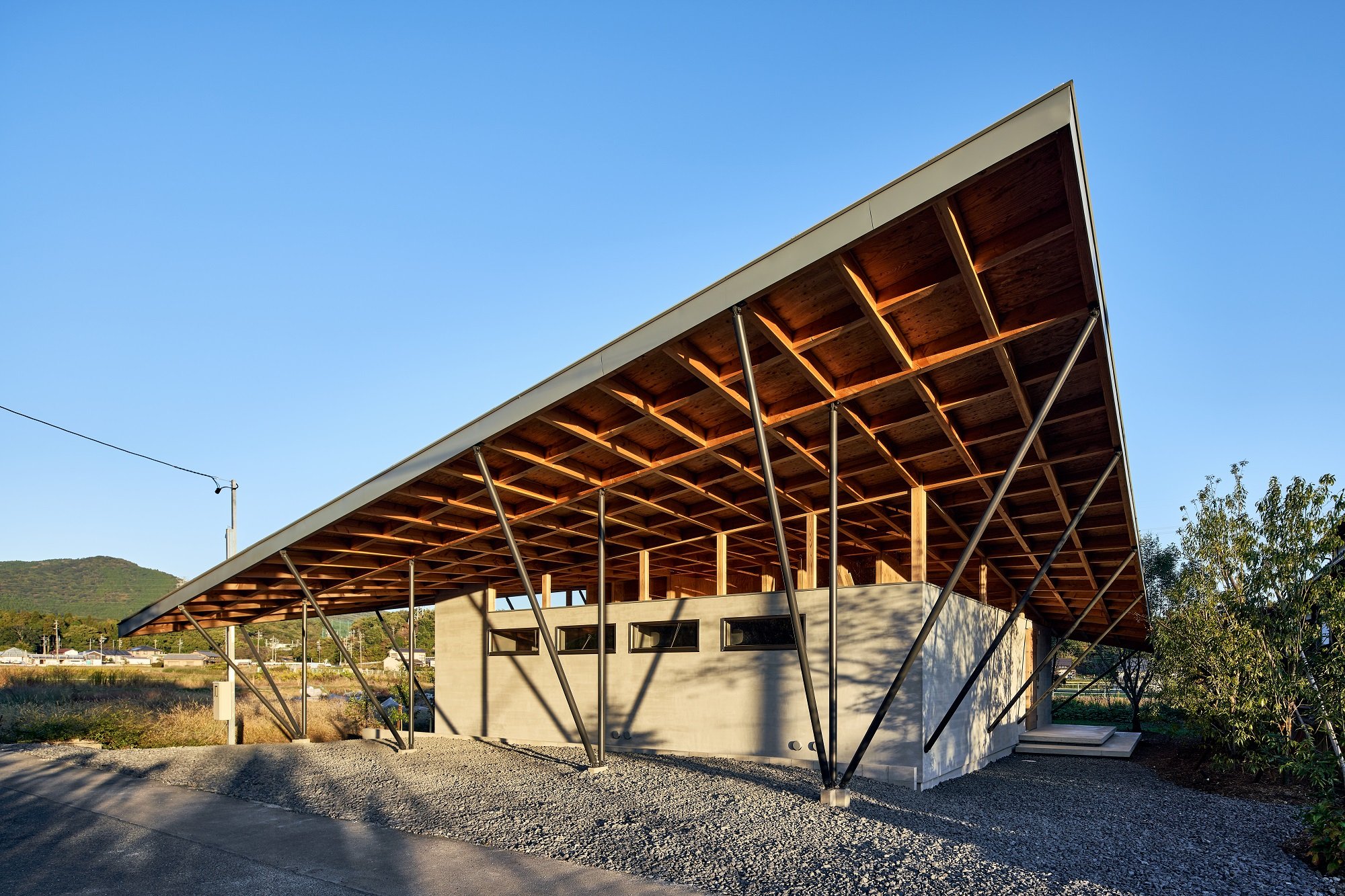
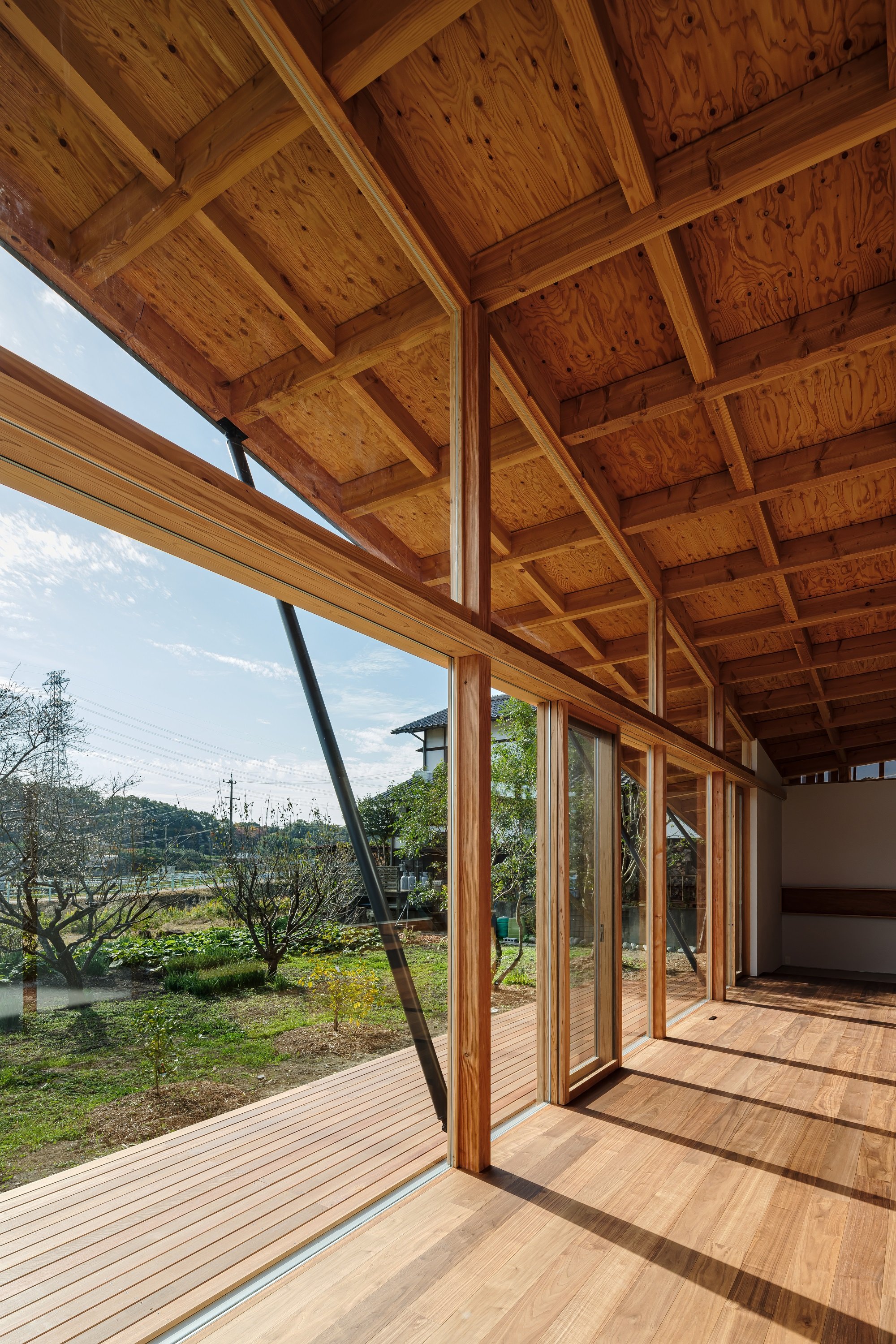

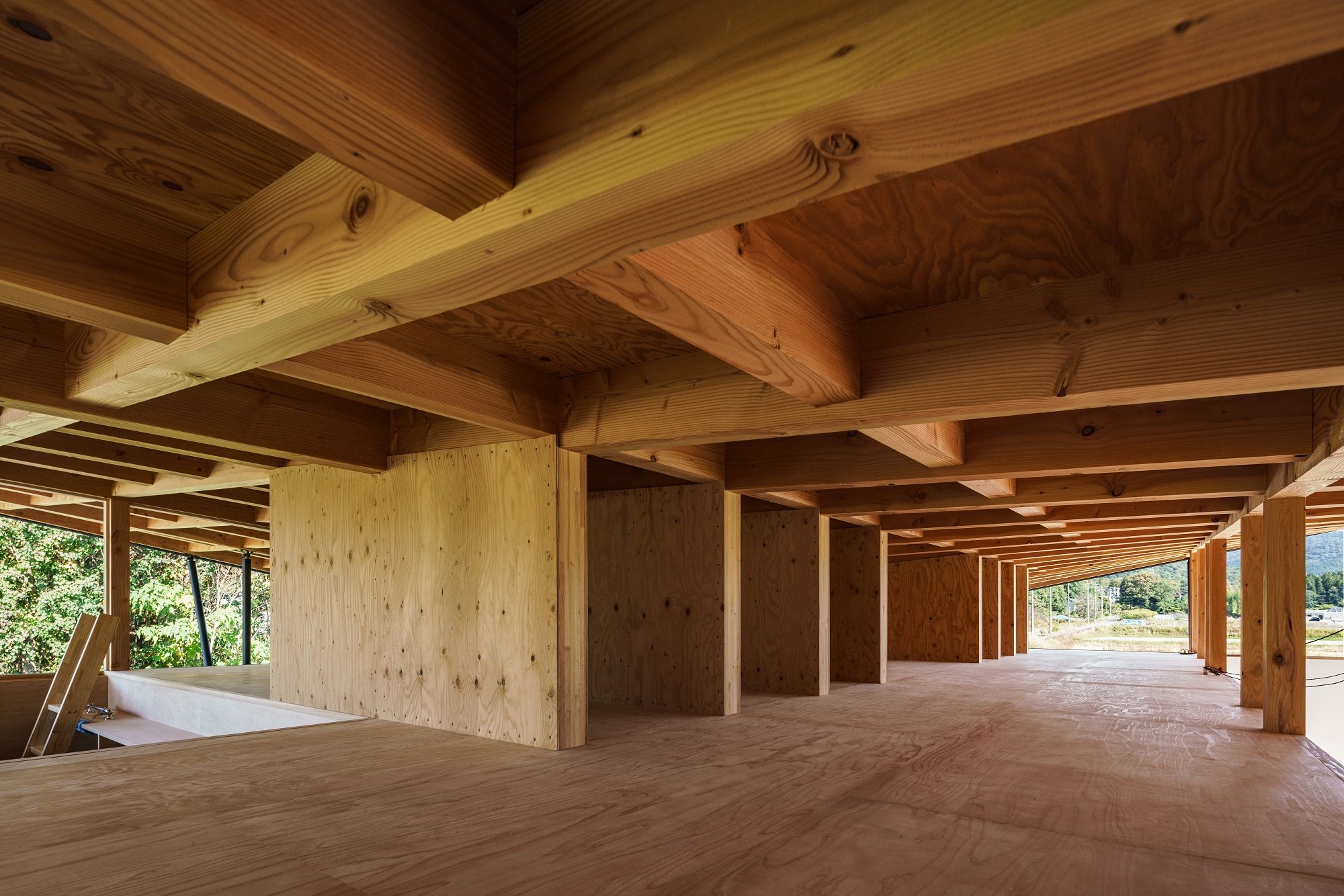
Model
About Tatsuya Kawamoto + Associates
Website: http://tatsuyakawamoto.com/
1990 born in Aichi,Japan
2012 ~ worked at Takeshi Hosaka Architects
2013 ~ worked at Hiroyuki Shinozaki Architects
2018 ~ established Tatsuya Kawamoto + Associates
2021 Shortlist of dezeen awards 2021
Winner of JID AWARD 2021
Winner of K DESIGN AWARD 2021
Winner of JAPAN WOOD DESIGN AWARD 2021
100 selections of Japan Architecture of the year 2021
KUKAN DESIGN AWARD 2021
Gold prize of sky design awards 2021 the new black
Chubu Architectural Award 2021
202 ASIA DESIGN PRIZE 2022 GRAND PRIZE
DESIGN EDUCATES AWARDS 2022 Honorable Mention
Winner of K DESIGN AWARD 2022
SD Review 2022
Winner of JID AWARD 2022
Merit Award of DFA Design for Asia Awards 2022



